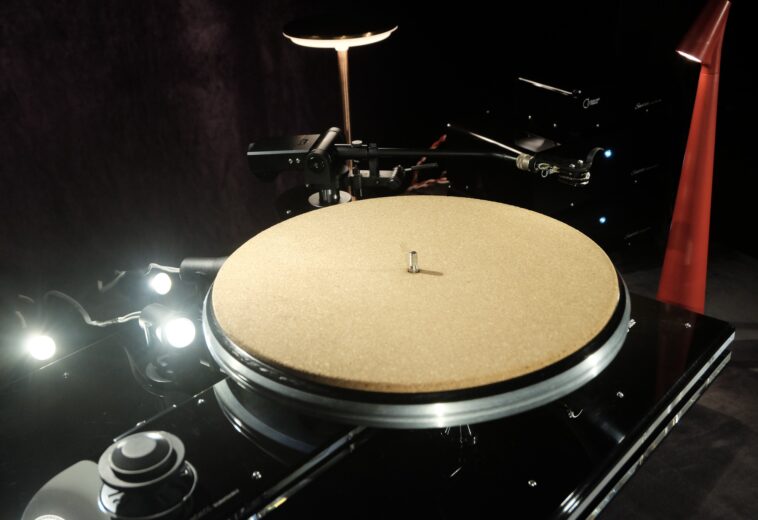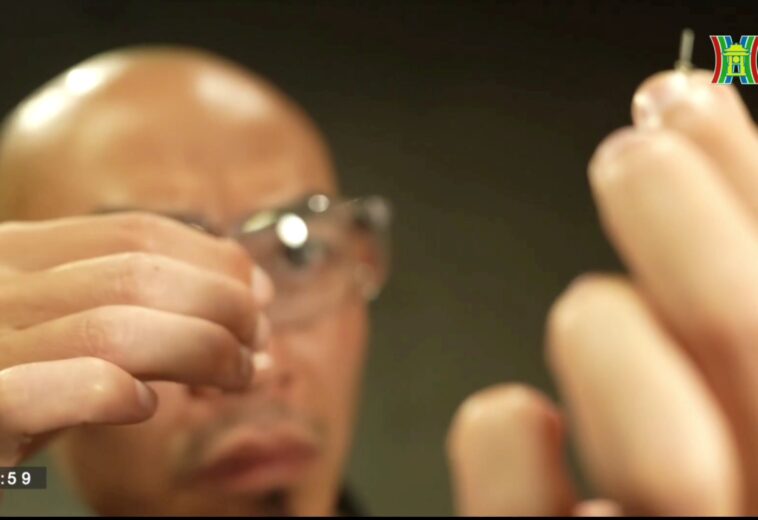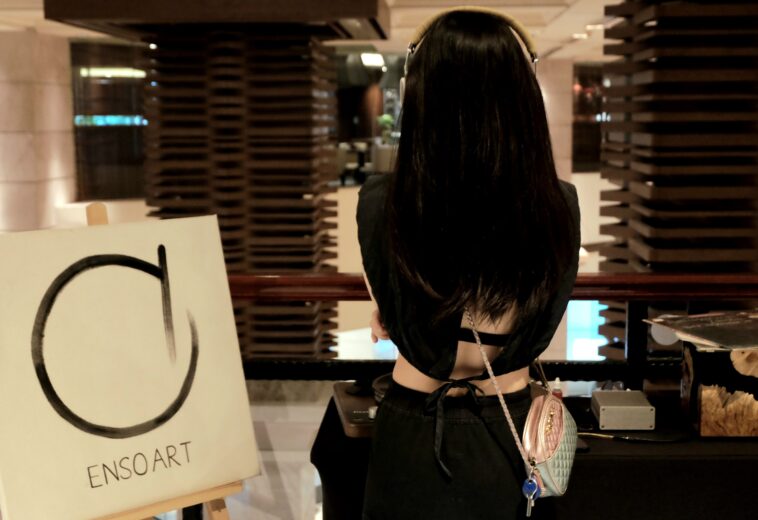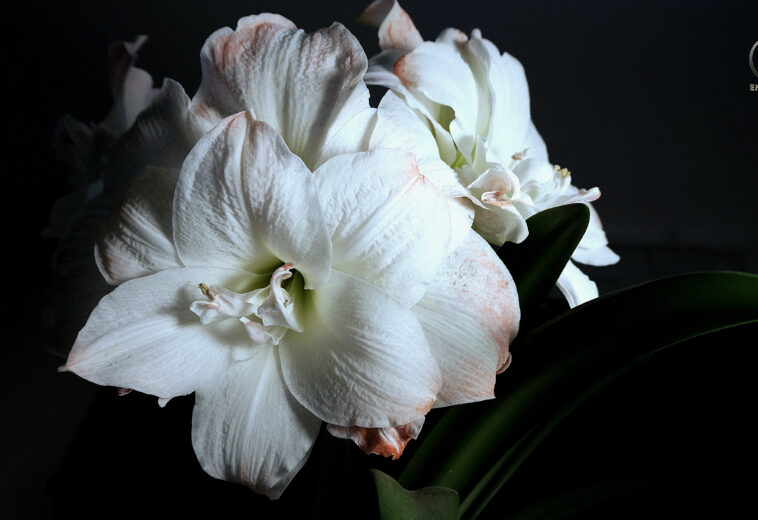Quy trình chế tác Enso Art

- Nguyễn Duy
- 0 Comment
- 3 views
Made in Hanoi, chương trình của Đài Hà Nội 1, tập trung vào cách thức tạo ra sản phẩm của người Hà Nội.
[English below]Enso trong Enso Art là một vòng tròn không ngắt quãng biểu hiện cho tâm trí tự do và tâm hồn sáng tạo, Enso cũng có nghĩa là Thiền tông, biểu trưng cho sự giác ngộ. Tôi phát triển Enso Art với hy vọng có thể mang đến trải nghiệm âm thanh analog thuần nhất, để biểu thị điều này, nhiều audiophile đã mất nhiều thời gian để tìm kiếm. Và ngay trong giới âm thanh, tiếp xúc với âm nhạc là đích đến cuối cùng. Lúc đó nhạc không chỉ phát ra từ loa mà hệ thống âm thanh sẽ biến mất, đó được coi như sự hòa hợp của nghệ thuật với công nghệ.
Là một cuộn dây như vậy nó sẽ có lõi từ và dây cuốn. Lõi từ này, tôi không sử dụng permalloy thông thường, tôi sử dụng hợp kim amorphous, trong đó thành phần kim loại nền như Ziro, Titan, Cobal hay Nikel được tôi thay đổi theo tỉ lệ nhất định với các mẫu kim khác nhau. Các kim loại quý như Palladi, Platin, và các nguyên tố đất hiếm cũng có tỉ lệ chính xác, để khi kết hợp với nhau sẽ tạo ra thứ âm thanh mà tôi muốn.
Và đối với sợi dây này có đường kính 10 micron, tôi đặt cán kéo riêng. Vì để đồng nhất trên mỗi centimet dây với tiết diện nhỏ như này, là vấn đề rất khó. Đặc biệt với khối lượng không lớn để nhà máy có thể cán kéo theo yêu cầu. Thế nhưng làm bằng tay quan trọng ở chỗ tôi có thể chủ động tạo ra méo hài. Còn hài âm là để tạo ra chiều sâu âm thanh, nó có thể xây dựng cảm xúc, nó làm tăng sự hòa hợp giữa các nốt nhạc. Chính cái hài âm này là điểm khác biệt giữa cứng nhắc và cảm xúc.
Tôi nghĩ, audio có thể chỉ là một cuộc chơi, nhưng nếu mắc kẹt vào thiết bị thì tôi khá chắc rằng chúng ta khó có thể tiếp xúc với âm nhạc. Đó là điều mà không ai muốn. Nên tôi cố gắng tạo ra một thứ âm thanh tự nhiên, có thể truyền đạt cảm xúc, và phải đủ tốt để thể hiện trọn vẹn bản thu. Để người nghe thực sự tiếp xúc với âm nhạc, đây là điều mà tôi muốn hướng đến.
—-
“As we can see, the turntable system consists of quite a few components, with the stylus being the most important part. It acts as a reading device, converting the grooves on the surface of the vinyl record into electrical signals that we can listen to. As the vinyl spins, the stylus makes contact with the grooves, generating vibrations. These vibrations are then converted into electrical signals, which produce sound through the speaker system.
The internal components of the stylus are not many. We know that the laws of physics remain unchanged, but the difference between this product and others lies in the combination of materials. This stylus is the heart of the turntable system. Of course, there are other important components, but the heart of this heart is the coil that generates the electrical signal.”
“As for such a coil, it will consist of a magnetic core and winding wires. For the magnetic core, I do not use ordinary permalloy; instead, I use an amorphous alloy. The base metals, such as Zirconium, Titanium, Cobalt, or Nickel, are adjusted in certain proportions depending on the different stylus models. Precious metals like Palladium, Platinum, and rare earth elements are also precisely measured, so that when combined, they produce the exact sound I desire.
The wire I use has a diameter of 10 microns, and I have a custom-made drawing machine. Achieving uniformity in every centimeter of wire with such a small cross-section is extremely difficult, especially when the total mass is not large enough for a factory to produce the wire according to specification. However, the handcrafting process is important because it allows me to intentionally create harmonic distortion. Harmonics help add depth to the sound, build emotion, and enhance the harmony between musical notes. It is precisely this harmonic quality that makes the difference between rigidity and emotion.”
“I think audio may just be a game, but if we get too caught up in the equipment, I’m quite sure it would be difficult for us to truly connect with the music. That’s something no one wants. So I strive to create a natural sound, capable of conveying emotions, and good enough to fully showcase the recording. My aim is for the listener to truly engage with the music—this is what I want to achieve.”
—–
Xin chân thành cảm ơn:
– Đài phát thanh – Truyền hình Hà Nội.
– Biên tập & tổ chức sản xuất: ông @Nguyễn Mạnh Cường.
– Quay phim: ông @Quang Tuấn.
– Giám đốc kỹ thuật Enso Art: ông Nguyễn Anh Duy.
– Trợ lý: May Analogue
Chương trình Made in Hanoi, kỷ niệm 70 năm ngày giải phóng Thủ đô, phát sóng 21h50 ngày 11 tháng 10 năm 2024, kênh HTV1.





